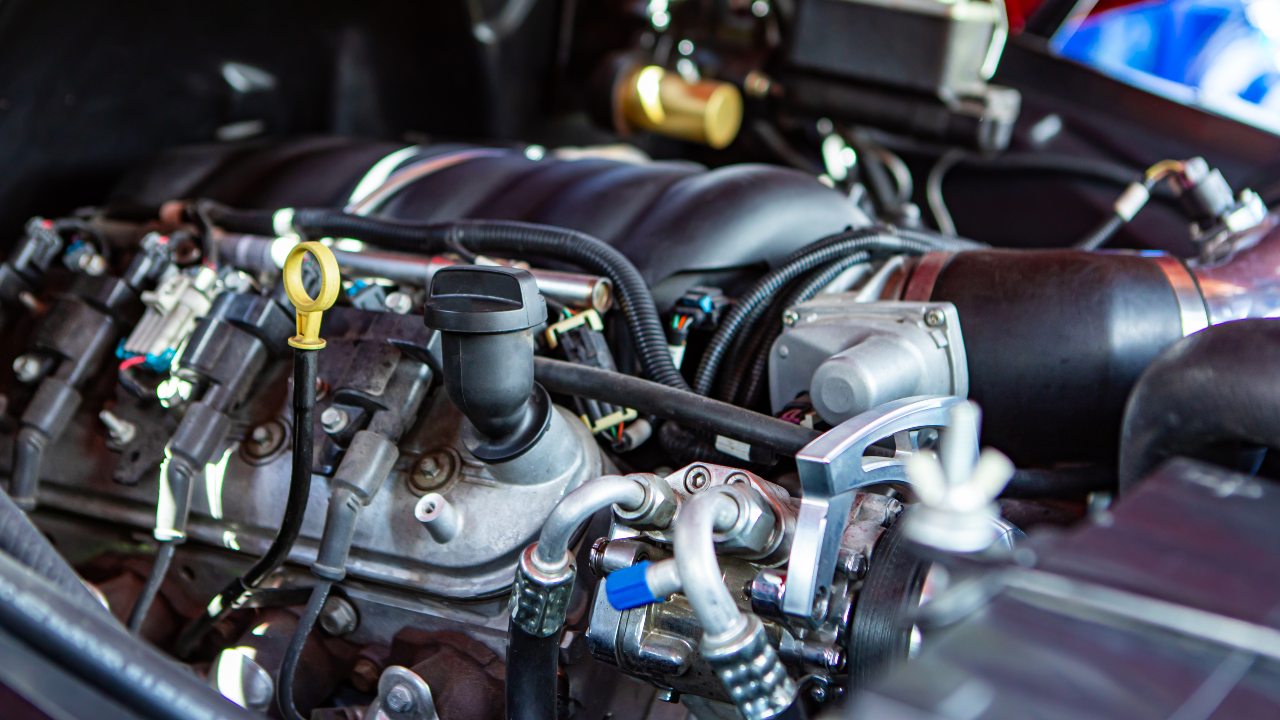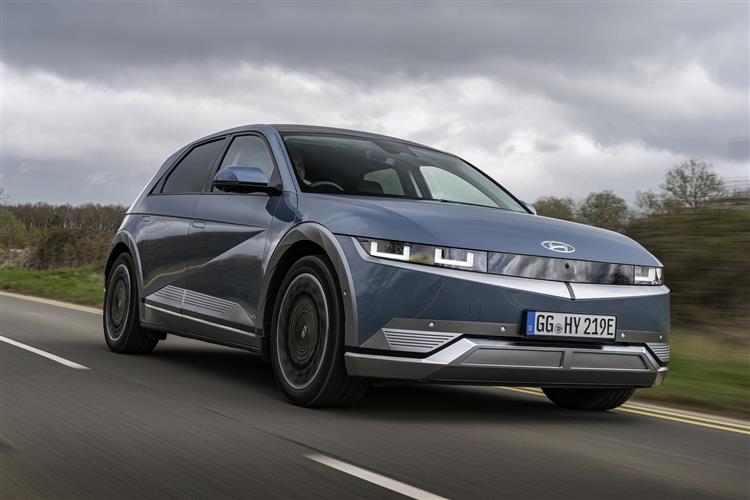By Matt Robinson
You might think, as a society, that we’ve long since moved on from the horse as the primary means of transportation – and yet, if you read any modern-day car review, there will inevitably be a reference to ‘horsepower’ somewhere in the piece. But what is it? Why do we keep going on about it? And how does it affect your choice of car? Read on to find out more.
Contents
What Is Horsepower? Why Are There So Many Different Power Measurements? HP/ PS/ CV BHP kW Why Is Horsepower So Confusing? What Is Torque? Which Car Should I Choose Based On Horsepower And Torque?
What Is Horsepower?
Well, it is a measurement of power or the rate at which work is done, used to denote the relative strength of an internal combustion engine or electric motor – a rating system of powerfulness if you like. Its name does indeed come from the animal: 1 mechanical horsepower, an imperial measurement, is the amount of energy required to lift a weight of 250kg by 1 foot every second.
The term horsepower was first coined way back in the 18th century to measure the relative strength of primitive steam engines compared to the working draft horses that would otherwise have been used to do this sort of heavy-lifting duty. As in, it told people at the time, who didn’t understand such new-fangled machines and how they could revolutionise industry, how many horses they would otherwise have needed to do the same amount of work that the steam engine could do. And so, horsepower has been associated with man-made engines ever since.
Why Are There So Many Different Power Measurements?
There’s actually not that many. There are really only three – it’s just that for one of the measurements listed below, the letters used vary from country to country all around the world, due to the different languages spoken across the globe.
In the main, when it comes to horsepower it’s simply a difference between imperial and metric – believe it or not, there are two ever-so-slightly different versions in use. The single mechanical horsepower is measured at 745.7 watts, while the metric horsepower is 735.5 watts – we don’t know, maybe they had slightly smaller, weaker horses in countries which continue to use metric measurements these days, or something.. At any rate, the marginal difference between them does result in slightly different figures in the 21st century, as we shall try to explain in the plainest possible terms now.
HP/ PS/ CV
This straight-up means ‘horsepower’ and is the metric measurement, favoured in continental Europe and most of the rest of the world. This is because it is a direct translation of various terms like Pferdestärke (a German word abbreviated to ‘PS’), cavallo vapore (an Italian phrase abbreviated to ‘cv’), cheval-vapeur (a French term abbreviated to ‘ch’) and even more unusual languages like the Swedish hästkraft (abbreviated to ‘hk’) – all of these terms, no matter which language, simply mean ‘horse power’. Almost everyone uses horsepower. Except…
BHP
Here in the UK, we prefer to use ‘brake horsepower’, abbreviated to ‘bhp’. This is the mechanical measurement, or imperial if you prefer to refer to it that way. Although the solitary unit is higher in watts, an engine’s bhp figure is ever so slightly lower than its equivalent hp/PS figure; in fact, if you’re interested, the multiplier is 0.9864. So a car with 100hp would have 98.64bhp, rounded up to 99bhp, 200hp equates to 197bhp, 300hp to 296bhp and so on.
The ‘brake’ bit of its name comes from the fact that this measurement takes account of frictional losses in the engine – or the power lost by the braking effect of said friction. That’s why bhp and hp are ever so slightly different.
kW
This power measurement is becoming increasingly common in the age of the electric car, as it is a purer signifier of electrical power. Certain countries, like Australia, also use this as their preferred figure in car reviews and manufacturer literature, even for vehicles with internal combustion engines.
Anyway, kW refers to the kilowatt, equivalent to 1000 watts – itself a unit of power named after 18th-19th century Scottish inventor James Watt. The kW actually superseded hp/PS as the officially recognised measurement of engine power in European countries way back in 1972, but most automotive manufacturers quote both kW and PS alongside each other in their official documents and advertising.
There’s a couple of simple multipliers here, too, if you fancy them: 1kW is equivalent to 1.34bhp and 1.36hp or PS. That means a car with 100kW has 134bhp or 136hp, then 200kW becomes 268bhp or 272hp, 300kW becomes 402bhp or 408hp, and so on.
Indeed, if you were bored and you wanted to peruse car manufacturers’ spec sheets, you’d find their engines typically make neat and round kW figures like 110-, 150-, 200, 300kW etc, which is why car models then have unusual hp and bhp figures which are not multiples of 5 or 10. Sorry, we’ve lost you now, haven’t we?
Why Is Horsepower So Confusing?
Often, people will say ‘bhp’ when they strictly mean ‘hp’ or ‘PS’. The Volkswagen Group, for instance, as a German company, prefers to work strictly in PS when it comes to its engines. So when you see some engine listed as a 150 TSI in any Audi, SEAT, Skoda or Volkswagen, that means it has 150hp/PS – or 148bhp. However, some people will either lazily or erroneously simply write this as 150bhp – which is actually 152hp.
Then there’s the Americans. They use the letters ‘hp’ and talk about horsepower all the time, but American horsepower equates to mechanical/imperial horsepower – so, in the example above, they’d write the Volkswagen TSI engine as having 148hp; it’s not wrong, it’s just a matter of two nations separated by a common language. They should really use bhp. Tsk.
However, we’re getting lost in the semantics. It really doesn’t matter what you use to denote your engine’s power, as long as you compare apples with apples then you’re fine – so hp versus hp, bhp versus bhp and so on.
What Is Torque?
Torque is another measurement used with engines, which is defined as ‘the rotational equivalent of linear force’. That sounds confusing, as does saying ‘an engine’s power output is expressed as its torque multiplied by its rotational speed of the axis’. So let’s put it in more obvious terms: if an engine’s power is, well, its power, its torque is more to do with its flexibility – or its ability to perform over a wider operational rev range.
Essentially, your car’s engine should deliver its peak power at a higher point of revs than its peak torque. This means that, if your car makes 200hp at 6000rpm, it will not be delivering that full 200 horsepower until its engine is revving at 6000rpm. And not many people drive everywhere at 6000rpm, for a variety of reasons – many of them revolving around speed limits.
But if it makes its peak torque at, say, 1500rpm, then the car will feel accelerative and flexible at lower revs, without you having to work the vehicle really hard to get the best from it. Torque is recorded in a whole variety of different measurements that are frankly baffling in number, but the main two used most widely in the automotive industry are expressed in pound feet (lb ft) or Newton metres (Nm) – the latter, like watts, again named after a famous scientist, in this case Sir Isaac Newton.
Want another canny multiplier? OK, it’s 0.738. That is, almost all manufacturers now quote peak torque in Nm, but if you want to know the lb ft figure then multiply by 0.738. So 100Nm is 73.8lb ft, or 74lb ft, 200Nm is 148lb ft, 300Nm is 221lb ft, and so on.
Which Car Should I Choose Based On Horsepower And Torque?
As ever, it depends upon what you want it for. Horsepower is, primarily, involved with the speed of a car – it’s not an absolute given (as factors like weight, gearing and aerodynamics all play a part too), but a rough rule of thumb is that the more horsepower a car has, the faster it will be when travelling at its top speed.
Obviously, as we’ve already stated, when you’re travelling along a motorway in a high gear at low revs, a combustion engine is only using a fraction of its power – there are some modern cars which have read-outs that show you how much power you’re using, and you would be mighty surprised how little it power you deploy in reality. For example, cruising at a steady 70mph on a flat, level motorway can use as little as 10-20hp of the engine’s power. Seriously.
There is an old saying among car enthusiasts that it’s not power that accelerates a car, but rather torque. This is a much more desirable commodity from a powertrain and one of the reasons electric cars are so popular – these vehicles’ motors deliver maximum torque instantly, which is why they feel so fast to accelerate in.
Turbodiesels
Turbodiesels also generate a lot of torque, while turbocharged petrols have more of the stuff than normally aspirated petrols – that is, engines without a turbo. So if you want easy-going flexibility at all revs, or you regularly tow heavy loads behind your car, you want more torque than you do horsepower. An extreme example: agricultural tractors typically only develop low horsepower figures, sometimes only around 150-180hp, but they will have monster torque outputs of around 770-800Nm, because it’s far more useful to the sort of work they do.
Rough Ballpark Figures By Bodytype
And so that brings us to our guidance ballpark figures. City cars and superminis, or ‘runarounds’ more colloquially, tend to have anything between 75-150hp, and (if turbocharged) 200-250Nm of torque. Larger hot hatchbacks will be developing more like 280-300hp and 350-420Nm, while big performance saloons with V8 engines can make serious numbers of 500-600hp and 700-850Nm of torque. That’s a LOT, for the avoidance of any doubt.
Realistically, 120-300hp is more than enough power for most people’s road needs – hence why most everyday cars, of all sizes, will be in this power bracket. Anything above 300hp is still a lot, with internal combustion supercars these days needing 700-800hp to stand clear of the field. In terms of torque, 400Nm is a healthy figure in most larger cars and around 500Nm in the bigger SUVs, although 200Nm is more than sufficient if cars are reasonably light and small. Anything less than 200Nm is pretty weedy, if we’re honest.
Some of the torque kings of the motoring world can deliver up to 900Nm, but skewing the figures these days are electric cars. There are extreme examples with way more than 1000hp and 2000Nm, but even midranking electrics tend to have a lot of torque, relatively speaking – an example being the all-wheel-drive Hyundai Ioniq 5, with a colossal 605Nm.







